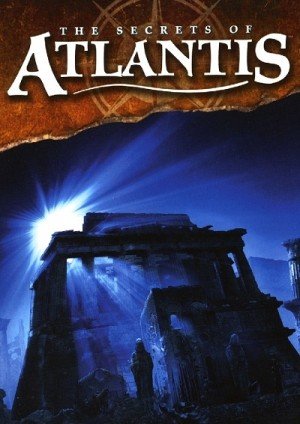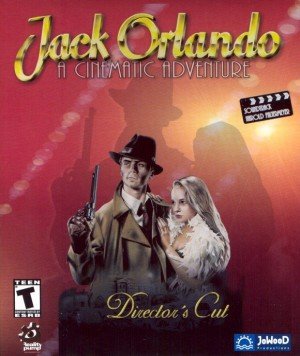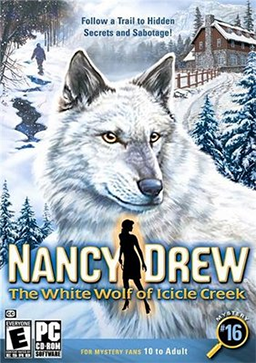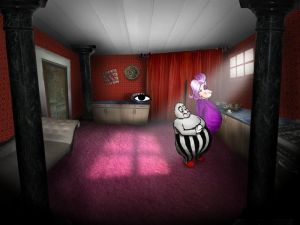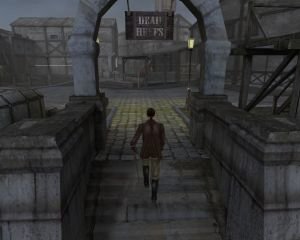Review for What Makes You Tick: A Stitch in Time
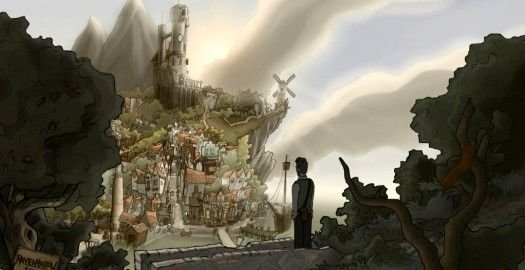
Six months ago, having gone missing on a hiking expedition in the mountains some time before, Nigel Trelawney’s father was officially declared dead. With a copy of the will and an old photograph bearing a strange message, Nigel has travelled to the remote fishing village of Ravenhollow to deal with his father’s estate. This is not, of course, simply a matter of signing a few pieces of paper. A despotic regime, an evil genius and some fantastic inventions created by his father and colleagues at the hyper-intellectual Smith Institute serve to make What Makes You Tick: A Stitch in Time an exciting independent adventure that runs like clockwork, with only the occasional grit marring an otherwise smooth and satisfying experience.
This game is the commercial sequel to Lassie Games’ 2007 freeware offering What Makes You Tick?, and starts by repeating the closing cutscene from its predecessor. Whilst it would be advisable to play that game first, wherein a young man searches for a member of the Smith Institute and an unscrupulous villain kidnaps a young lady, a synopsis of the plot is included in the PDF manual for those wishing to jump straight into this one. Once underway, Nigel soon meets several familiar characters, including the original protagonist, Nathan, and learns of their pursuit of a criminal. The conversation is interrupted by the nefarious Lowell Cain, who acts as an agent for Northwest Castle, which has recently “re-subjugated” Ravenhollow. This meeting does not go well, ending with Nigel being knocked out and locked in the boathouse.
The first of the game’s four acts, ironically titled “A Warm Welcome to Ravenhollow”, covers Nigel’s escape from imprisonment and attempts to gain entry into Ravenhollow proper. The second and largest chapter involves Nigel trying to locate the nine insignia rings of the former members of the Smith Institute, as an administrative error led to the Institute owning a small fraction of his father’s estate, requiring their seals to release it. In this quest, Nigel learns more about the dark pall Northwest Castle has cast over the village, and the circumstances that led to the Smith Institute closing five years ago. In the third and fourth acts, control switches separately to Nathan and another character best discovered for yourself, as the truth behind the village’s oppression is revealed, and dark secrets from the past result in a race against time to stop a diabolical mastermind before it is too late.
The overall tone of A Stitch in Time’s story is serious, but a lot of the interaction adopts a lighter tone with a wry sense of humour, preventing this from being an unremittingly grim tale. What makes the story really satisfying is how everything slots together. Initially, the tyranny of Northwest Castle and the closure of the Smith Institute seem unrelated, but there are soon indications that hi-tech machinery may be assisting the castle. The fact that before long the castle suddenly seems happy for Nigel to search Ravenhollow for the insignia rings also seems odd at first, and it is only when Nigel succeeds in his quest that the reason for this change of heart becomes clear.
As well as being an intriguing story in its own right, part of the pleasure stems from the developer’s “show, don’t tell” philosophy. For example, the village is under the oppressive thumb of uniformed thugs, and players do not need to rely on expositional dialogue to appreciate the situation. And though you’ll hear about the theft of property, you’ll also get to see it first-hand, as fearful fisherman watch their catch enumerated for the punitive local “taxes” by a castle lackey. The tales of “strange lights” being used to subdue dissenters become reality for Nigel as he witnesses just such an incident and the after-effects. This issue ties into the defunct Smith Institute, well-known for producing wild and extraordinary inventions, some of which the protagonist will encounter personally. Even the dialogue is written so that each character addresses only the situation as it affects them. Their various concerns result in different aspects being highlighted each time, the whole story only coming together by compiling the disparate accounts. This serves to make the adventure a much more believable, immersive one.
Movement is controlled through simple point-and-click, the cursor changing colour over a hotspot with the name of the object highlighted at the bottom of the screen. Double-clicking exit arrows provides an immediate escape for those not wishing to wait for Nigel to walk across the screen. Whilst groups of scenes like the village streets are linked together directly, leaving the area opens a map that allows quick travel to any available further location. Interaction is done by holding the left mouse button down for a moment to open an action menu, which incorporates look, talk and use icons. The latter changes in context to become things like “search” or “pull”, giving players an indication of the expected result. Moving the cursor to the bottom of the screen calls up buttons for inventory and, once obtained, a notebook for important documents. All three verb interactions can be used on inventory items, and it is often advisable to do so, as some can be manipulated or have other items hidden within them. A real effort has been made to avoid stock comments, as even unlikely player actions often produce more than just a generic response. Attempting to talk to a large bolt results in Nigel stating that neither he nor his dentist would approve of trying to remove it that way. There are also many hotspots not related to your quest, where interaction simply provides more insight to the world.
There is quite a lot of dialogue in this game, but only some conversations are vital, as many just serve to give background to the setting and characters. Even these are well worth exploring, as nuggets of information that provide clues to puzzles are often hidden within. Whilst the characters are sometimes rather broad, defined largely by a few prominent characteristics, they still possess distinct and interesting personalities. Down at the docks stands the fiery Captain Amayi, who refuses to leave Ravenhollow until the castle returns the goods they stole when she arrived. In the inn sits the lawyer who has turned to drink as the law becomes twisted and trampled under castle rule. In the antique shop you find a proprietor who is mainly annoyed by the castle’s lack of respect for local history. When a character has particular knowledge or interest, asking about certain subjects reveals additional layers of queries, allowing for some truly extensive conversations. In certain situations the characters themselves will initiate dialogue rather than just waiting around for players to interact with them.
A Stitch in Time’s background graphics have received a significant upgrade from its freeware predecessor. They are now gorgeous watercolours replete with a wealth of detail: the Port Authority building is decorated with memorabilia from its sea-going former occupant; the village inn has a wide selection of strange and interesting bottles behind its bar; and the tall thin castle, backed by two taller mountains, dominates the area visually the same way the castle authorities dominate physically. What makes the scenery even more impressive is that many locations are presented during both night and day. The night scenes are not simply darker versions of day, instead incorporating such things as light from windows forming patterns on the pavement. These backdrops are further enhanced by animations like boats rising and falling in the gentle swell of the ocean or gulls wheeling about in the air above. The wealth of detail does come at a price, however. It is easy to miss vital items, not because they are too small to see, but because you can’t tell at a glance whether anything is merely part of the background environment or not. I had cause to refer to the PDF walkthrough that comes with the game on a couple of occasions, each time learning that I had overlooked such an item. Once I knew what I was looking for, the items in question were easy to spot, so thoroughly scanning each scene should prevent most problems.
The character designs have also been improved, though they are not as detailed as the backgrounds. People are properly proportioned and although coloured without shading, the addition of lines to depict folds in clothing goes some way to enhancing the realism. Whilst having slightly simplified features, faces are detailed enough to convey expression and make those based on real persons (such as Peter Lorre as the lawyer, Lionstone) recognisable. When characters move, views of them facing each of eight directions have been used, and animation is largely done as if they were paper dolls whose parts are joined loosely at the major joints. For the most part, this animation serves the overall aesthetic well, but it does lead to some stiff and unrealistic movements, like when a character goes from standing to sitting on the floor. There is also an occasional problem with Nigel’s walking animation, as the movement of his legs do not always match his progress. This isn’t helped by the fact that Nigel can get caught up in narrow spaces, walking back and forth a few times to free himself from scenery before continuing to where the player has clicked.
Puzzles are cleverly thought out, with ample clues provided around the village to the observant and sharp-minded. You’ll use dialogue to trick a character into giving you a spare part, combine inventory to scare a timid guard, and solve an old riddle that provides the means of opening a secret entrance. These puzzles are tremendously satisfying to solve, providing clear objectives but requiring the player to utilise items and knowledge from multiple sources to succeed. As a result, the puzzles reward the player for paying attention and thinking about what they’ve seen and heard without being handed the solution on a plate or finding it needlessly obscure. The game is not rigidly linear, so if you are struggling with a particular puzzle, you can do other things while waiting for a solution to come to you. The only time I found a solution not perfectly logical was near the end, where the means to bridge the second half of a gap in a walkway seemed more dangerous than just jumping over it. This is very much the exception though, as even the most unorthodox solutions usually seem like entirely reasonable approaches in context.
The day/night cycle is key to a lot of puzzles, with available locations, items and characters changing between the two. During the day you’ll find shops open, smug officials in the Port Authority, and kids in the street plotting wild schemes to overthrow the castle. At night, the village fishermen return from a day at sea, nocturnal animals make an appearance, and two young lovers gaze up at the stars. Once you have found a place to sleep, you can immediately switch between day and night at will, with Nigel commenting that he could use a few hours of sleep. This feature is used to good effect during tasks that would actually take some time to complete. When you order a mask from the local craftsman, he tells you it will be ready tomorrow. Players who wish to get their hands on the mask immediately can simply sleep twice to do so. There is generally no need for such measures, however, as for most of the game you have a wide variety of options available to you at any given time.
A Stitch in Time also features a minigame, available from talking to a particular character during the day, in which you use the mouse to snag fish and drag them into your companion’s net. Achieving a high score is not an easy task, but doing so will earn you an additional inventory item. This isn’t vital for completing the game, however, as it simply provides some additional options for a couple of puzzles. There are two key items that can only be retrieved by fishing, but both are relatively simple to acquire, so this should not prove a problem.
As a musical backdrop for your adventure, the game has a fine and varied soundtrack. The opening piano piece builds up to a dramatic crescendo, whilst its repeated rising and falling rhythms put me in mind of the complex clockwork machinery the title suggests. A gentle guitar piece reflects the peacefulness of the village at night. Later, a sailor at the harbour plays a tune sounding like an old sea shanty on an accordion. Each piece fits its respective scene, and the fading out and in when moving from one location to another ensures a smooth transition between pieces. Where appropriate, the soundtrack is also incorporated into the game world as a record playing on an old phonograph or a slightly crackly radio. The numerous sound effects, be it the gentle washing of waves on the shore or the squeak of the inn’s barman polishing a glass, further serve to bring the world alive. The only thing that could have made the sound better is if the game was voiced, though with the sheer amount of text in the game, I can understand why this wasn’t possible for a small indie developer.
Whilst I largely enjoyed the series’ freeware debut, I did find some of the puzzles a bit obscure in places. Not only have the developers addressed that problem in this commercial sequel, they have significantly improved every other aspect of the game at the same time. The backgrounds are beautiful, the music is pleasing to the ear, and the puzzles are very rewarding to overcome. The storyline builds on the foundation of the original, with a delightful setting that provides an immersive backdrop to proceedings. The lack of voice acting will be a deal-breaker for some, but anyone else will quickly get used to it, and the game’s pathfinding and animation stiffness are only mild irritants for the most part. Clocking in at about 8 to 10 hours of gameplay, it also provides a healthy chunk of adventuring, which is affordably priced exclusively at the developer’s website (where a demo consisting of all of Act 1 can also be sampled). It may not get the attention of higher-profile titles, but What Makes You Tick: A Stitch in Time is a game that ticks almost every checkbox of quality, and is well worth a download for any adventure gamer.


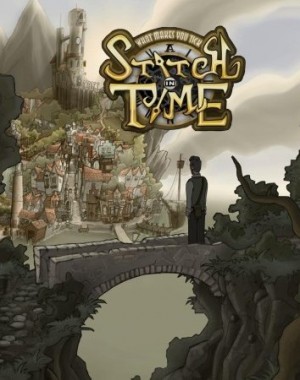
_capsule_fog__medium.png)





